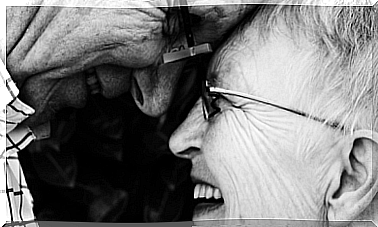Avoidant Personality Disorder: Social Isolation As Refuge

An avoidant personality disorder occurs in 3% of people. It describes sensitive, cautious people locked in their lonely world. They are afraid of being hurt, judged and rejected.
They have an extreme desire to flee. In addition, they are unable to process their fears for life. So they eventually build walls around their own fortress in which to take shelter.
This disorder was defined at the beginning of the 20th century by the psychiatrists and eugenicists Bleuler and Kretschmer. But it is not very well known. Not like obsessive-compulsive disorder, or the dependent personality disorder, for example.
Historians and experts in this psychiatric condition give the same example. They say the best example of avoidant personality disorder is Emily Dickinson.

Characteristics of people with avoidant personality disorder
There was a time when people thought that an upbringing based on criticism, humiliation and contempt inevitably led to avoidant personality disorder.
But today we know that in no type of clinical disorder it is never simply ‘2 + 2 = 4’. In other words, everyone reacts differently to the same circumstances.
And in the universe of personality disorders, there are a lot of conditioning factors. There are more related disorders and extremely complex dysfunctional thoughts.
The current DSM-V also defines avoidant personality disorder as a form of social anxiety. In this case, that person’s self-confidence is so low that the person completely loses their social skills.
It even goes so far as to end up preferring isolation. But the most complicated thing about all this is that their situation is completely egodystonic.
That is, all their values, dreams, needs, and identities are in constant, unpleasant chaos. The mental exhaustion that follows is enormous.
But people with this disorder know all too well what to do to improve their situation. Because in general they are very intelligent people.
However, the very idea of confronting their fears, phobias and thoughts produces tremendous anxiety. So they prefer to make up excuses. They put things off. Moreover, they leave the solution they feel for the panic they feel today for tomorrow.

Characteristics of people with avoidant personality disorder
- The feeling that no matter what they do, they will always be rejected, criticized and pushed away
- An exaggerated level of self-criticism. They see themselves as completely incompetent people in every way. It’s normal for them to say things to themselves like “I’m not made for this world.”
- They tend to show an exaggerated level of dysphoria. That is, they combine sadness with fear
- They use an exaggerated “arsenal” of dysfunctional thoughts. “ It is better to do nothing than to try and fail .” “People are always critical. They like to humiliate everyone and they are indifferent to other people’s needs…”
- In addition to the social avoidance, they also practice three other types of avoidance. These avoidances are cognitive, behavioral and emotional. In particular, by not thinking, doing nothing and not processing emotions. That way, they don’t have to confront what scares them so much.
What causes these behaviors is the amplification of the cycle that keeps their fear alive. So little by little, to protect themselves from negative emotions, these people choose isolation.
Treatment for avoidant personality disorder
A therapeutic relationship with someone who has this disorder is often long and fruitless. This is due to a variety of reasons.
The first is that they tend to think that the professional will not understand their inner world. They think they will be rejected based on their thoughts, ideas, and needs.
Once the psychotherapist has gained their trust and built a strong bond, we may see progress. But what if that confidence never shows up? Then it is very unlikely that we will see any progress that will strengthen the patient’s hopes.
Things a person with avoidant personality disorder should work on include the following:
- Reformulating dysfunctional frameworks
- Working on their automatic thoughts and cognitive distortions
- Exploring the origins of their evasive behavior
- Thinking back to experiences that caused discomfort
- Reinforcing social habits that may help them in everyday life
- Create a progress chart
- Improve their social skills through group therapy
- Improve their self-image

As you can see there are several strategies. A professional can use these to help these patients. We are dealing with a disorder in which different types of therapy can be helpful.
Cognitive behavioral therapy, rational-emotional therapy, and psychodynamic therapy, as well as systematic desensitization can be especially helpful.









